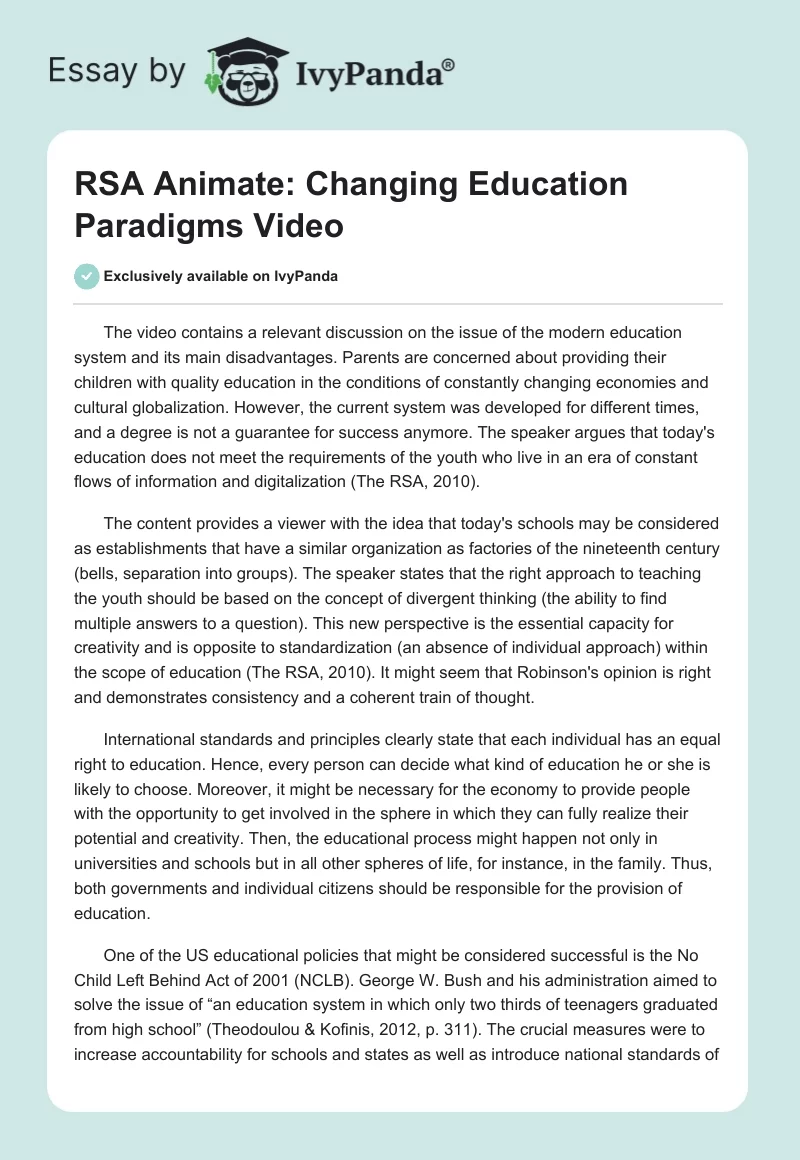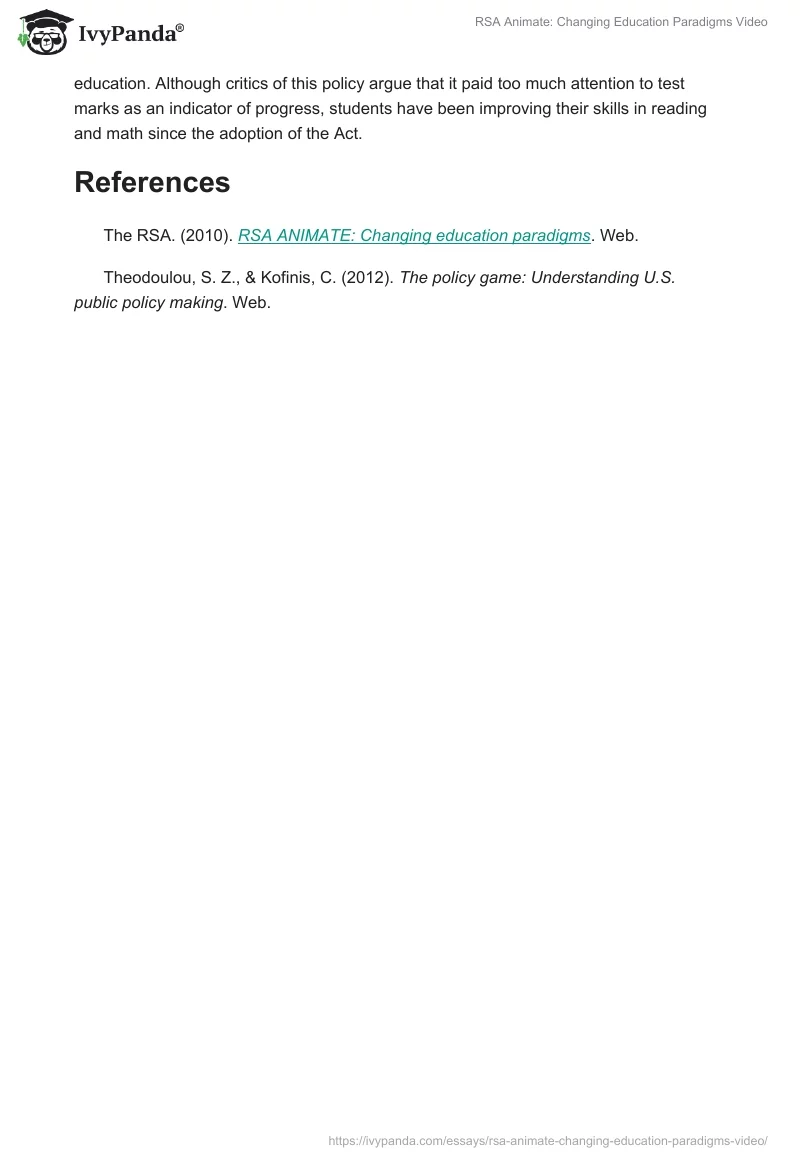The video contains a relevant discussion on the issue of the modern education system and its main disadvantages. Parents are concerned about providing their children with quality education in the conditions of constantly changing economies and cultural globalization. However, the current system was developed for different times, and a degree is not a guarantee for success anymore. The speaker argues that today’s education does not meet the requirements of the youth who live in an era of constant flows of information and digitalization (The RSA, 2010).
The content provides a viewer with the idea that today’s schools may be considered as establishments that have a similar organization as factories of the nineteenth century (bells, separation into groups). The speaker states that the right approach to teaching the youth should be based on the concept of divergent thinking (the ability to find multiple answers to a question). This new perspective is the essential capacity for creativity and is opposite to standardization (an absence of individual approach) within the scope of education (The RSA, 2010). It might seem that Robinson’s opinion is right and demonstrates consistency and a coherent train of thought.
International standards and principles clearly state that each individual has an equal right to education. Hence, every person can decide what kind of education he or she is likely to choose. Moreover, it might be necessary for the economy to provide people with the opportunity to get involved in the sphere in which they can fully realize their potential and creativity. Then, the educational process might happen not only in universities and schools but in all other spheres of life, for instance, in the family. Thus, both governments and individual citizens should be responsible for the provision of education.
One of the US educational policies that might be considered successful is the No Child Left Behind Act of 2001 (NCLB). George W. Bush and his administration aimed to solve the issue of “an education system in which only two thirds of teenagers graduated from high school” (Theodoulou & Kofinis, 2012, p. 311). The crucial measures were to increase accountability for schools and states as well as introduce national standards of education. Although critics of this policy argue that it paid too much attention to test marks as an indicator of progress, students have been improving their skills in reading and math since the adoption of the Act.
References
The RSA. (2010). RSA ANIMATE: Changing education paradigms. Web.
Theodoulou, S. Z., & Kofinis, C. (2012). The policy game: Understanding U.S. public policy making. Web.


